Cressingham Gardens Calls For A Ballot – On Saturday 2nd December 2017 residents of Cressingham Gardens in Tulse Hill marched with supporters to a rally at Lambeth Town Hall in Brixton to demand Lambeth Council hold a ballot of residents over the plans to demolish their homes. I went early to take a walk around the estate and take some photographs before the rally and march.
Cressingham Gardens – Tulse Hill, Brixton
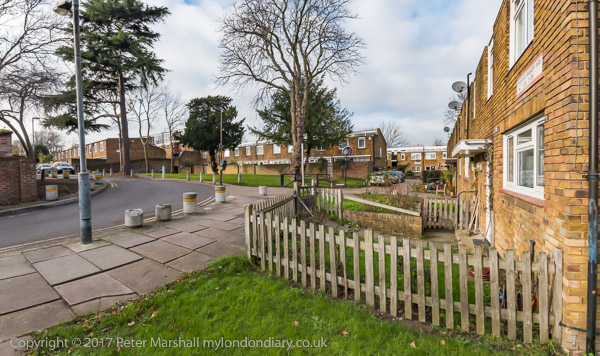
Council estates generally get a bad press, with media attention concentrating on those which were badly planned and have been allowed to deteriorate, often deliberately populated with more than than share of families with problems of various kinds, used as ‘sink estates’ by local councils. Some councils have even employed PR companies to denigrate and demonise those of their estates they want to demolish and sell off to private developers.
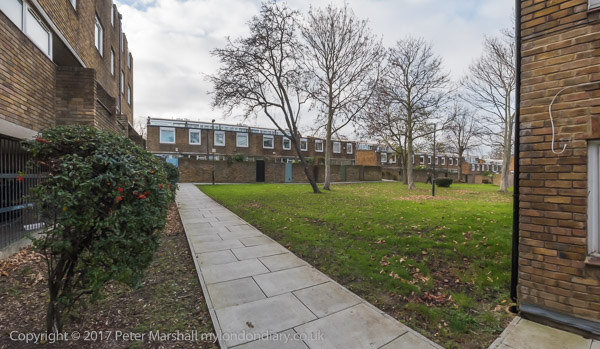
These developers have also powerfully lobbied our main political parties who have handed over much of their policies over housing to developers and estate agents and other property professionals who stand to make huge profits from turning public property into private estates.
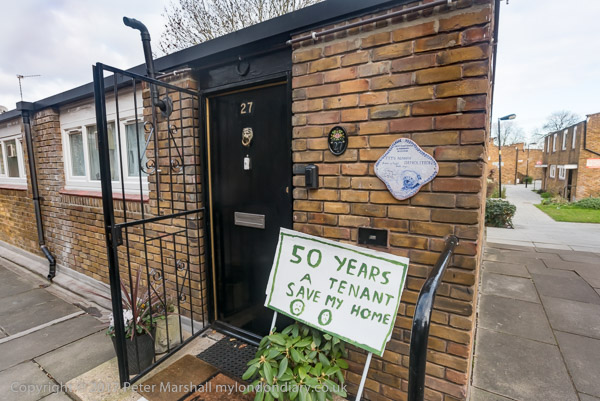
Yet many council estates are pleasant places to live, often much better planned than private developments of the same era, and providing more space for people than the cramped and expensive flats that are replacing them where redevelopment schemes have gone ahead. Lambeth Council have several such estates, including those at Central Hill and Cressingham Gardens where this would clearly be the case, and residents at both sites have campaigned strongly to keep their homes.
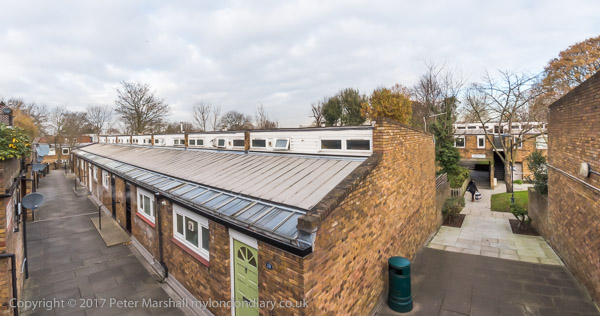
We seem always to be in a housing crisis in the UK, and some of the solutions that were taken to meet this have not always worked to well, particularly with some system-built high rises which were shoddily erected by private developers for councils.
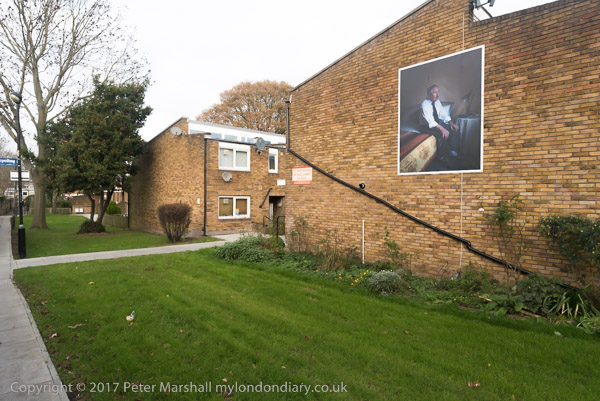
After I left home in the early 1960s I lived in private rented flats, then in a New Town in a flat from the development agency and then for many years now as an owner occupier. The private rentals were pretty squalid and the publicly owned flat was rather more spacious than the small Victorian house we have lived in since. It would have been good to have been able to move into socially owned housing when we relocated but it wasn’t available.
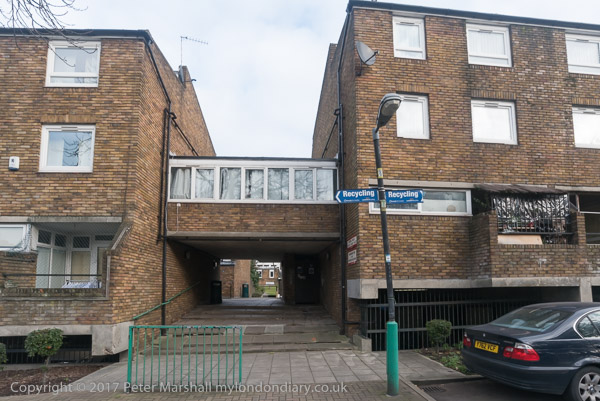
Until the Thatcher government came into power public housing had regarded as something desirable with even Conservative Councils such as Lambeth was then having a mission to provide quality housing for working class Lambeth residents. They employed some of the best architects in the country, such as Edward Hollamby, the chief architect for Lambeth Council who was responsible for Cressingham Gardens and designed this low rise ‘garden estate’ development built in 1967 to 1979 at low cost and with a high population density, but with the 306 homes each having their own private outdoor space.
As the Twentieth Century Society state “this is one of the most exceptional and progressive post-war social housing estates in the UK” but the application for listing the estate in 2013 was rejected despite Historic England praising the way the design responds to its setting, with skill and sensitivity, “both in the scale and massing of the built elements, as well as through the integration of these elements with informal open spaces which bring a park-like character into the estate”. It appears to have been a decision made in defiance of both the estate’s architectural and historical merit and solely on political grounds.
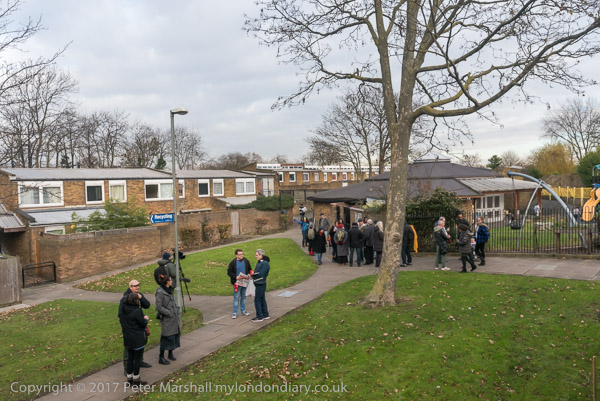
The estate is on the Twentieth Century Society Buildings at Risk list. Lambeth Council have completed their preparation and brief for its complete demolition and their web site states they “will shortly be starting RIBA Stage 2 (Concept Design).“
Cressingham Gardens residents say Ballot Us!
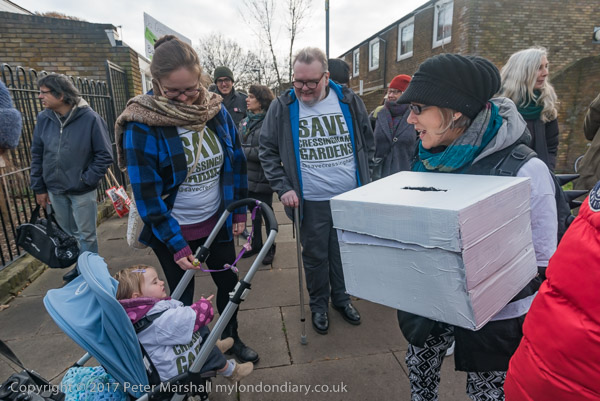
People met up next to the Rotunda in the centre of the estate designed by Hollamby as a children’s nursery, many carrying banners and posters. Residents were joined by other campaigners, including those trying to save Lambeth’s libraries and housing campaigners from north London.
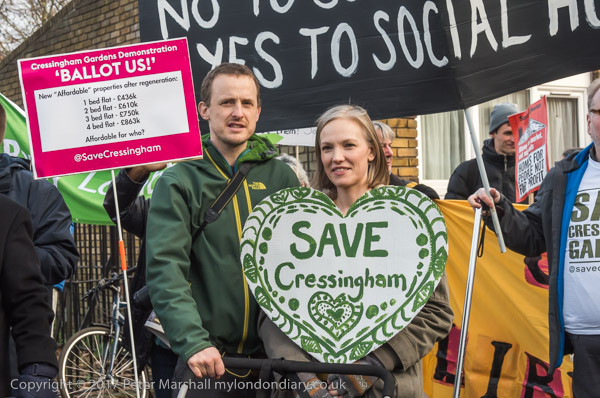
Residents love living on Cressingham – a small well-planned estate with a great community feeling and many know that they will be unable to afford the so-called afford ‘affordable’ homes that the council wants to replace their homes with – a 2 bed flat after regeneration will cost £610 (at 2017 values.)
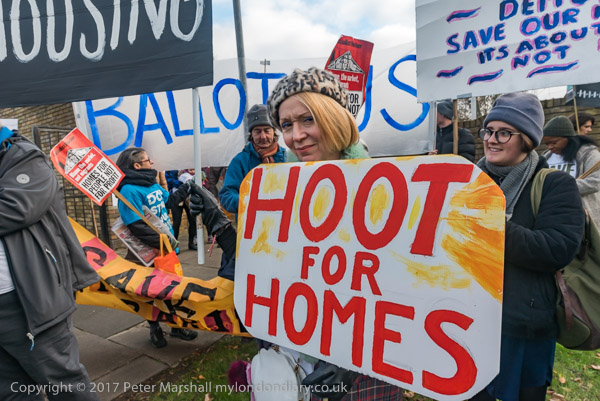
They want the estate to be refurbished rather than demolished, which the council says would cost £10 million. Many dispute the council’s costings and say that some of the problems the council has identified are a matter of poor maintenance rather than needing expensive building works. But residents in any case point to the council having just spent over £165 million on a new Town Hall and say refurbishment is a cheap option.
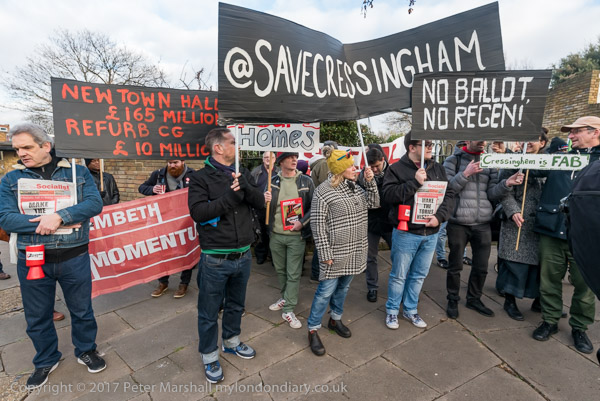
It isn’t the cost of refurbishment which makes the council turn it down, but the profits that developers can make from the site – and which the council hopes to be able to get a share. Though such schemes haven’t always worked out well. Although the developers have done very nicely out of demolishing the Heygate site in Southwark and building high density blocks on it, the council made a huge loss, though some individuals involved have ended up in lucrative jobs on the back of it.
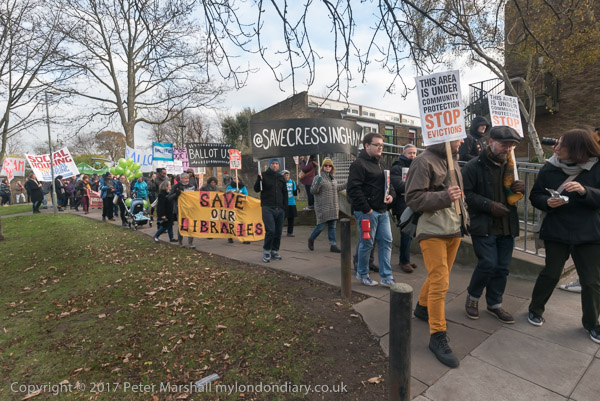
Lambeth is a Labour Council, and since the previous Labour Party conference party policy had been that no demolition of council estates should take place without consent, but Lambeth Council seem determined to ignore this and go ahead with their plans for a so-called ‘regeneration’ which would see all 300 homes demolished, without any plans to provide immediate council housing for the roughly 1000 residents who would be made homeless. To the council these residents are simply occupying a site worth several hundred thousand pounds – an asset the council wants to realise. It doesn’t care about communities, about people.
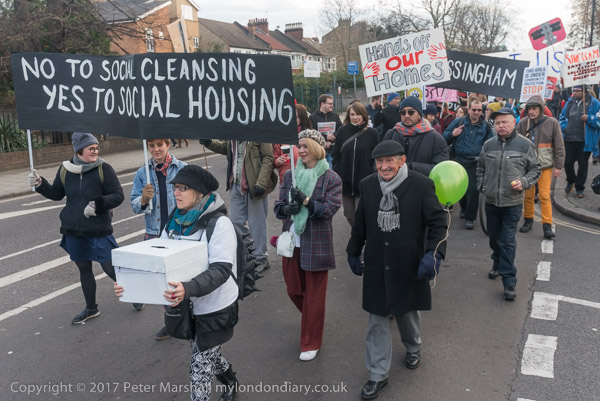
Those who have become leaseholders of their homes are likely to get even more shoddy treatment. The amount of compensation they are likely to receive is likely to be less than half they would need to buy a comparable property in the area – on or the rebuilt estate.
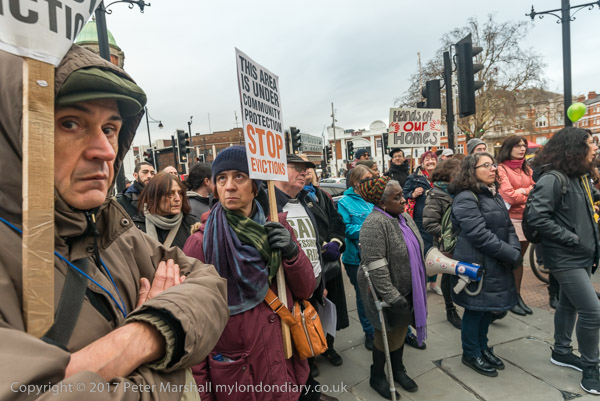
Cressingham is in a very desirable location, on the edge of a large park and with good transport links a short distance away. Many are likely to have to move miles away on the edge of London or outside to find property they can afford, far from where they now live and work.
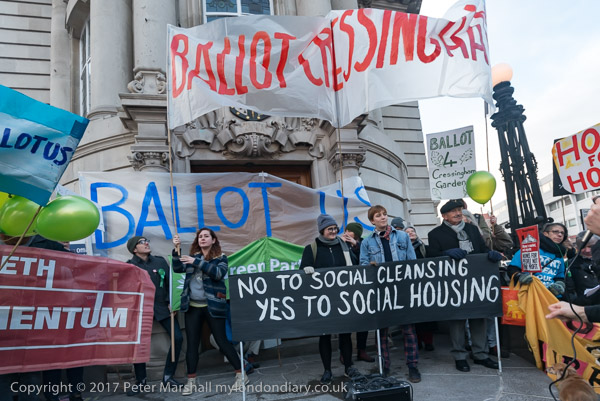
The march set off for Brixton Town Hall on the corner of Acre Lane where a small crowd of supporters was waiting for them. The placed a box containing petition signatures in front of the locked doors on the steps and a rally began with shouts calling for a ballot.

Among those who had come to speak along with residents from the estate were Tanya Murat of Southwark Homes for All and Piers Corbyn, a housing campaigner also from neighbouring Southwark.
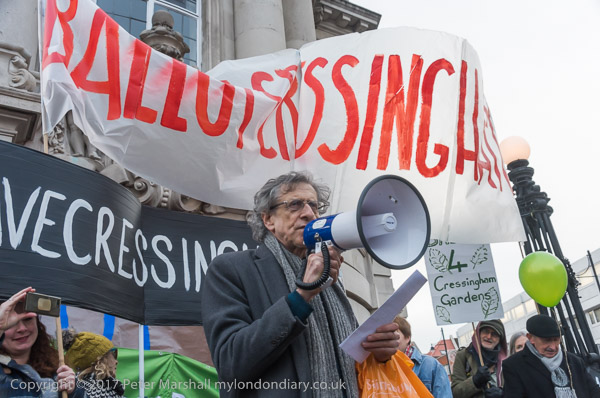
One of the strikers from the Ritzy cinema opposite told us that none of them could now afford to live in Lambeth now, and it’s clear that we need more social housing not less in the area. A local Green Party member also told us that they were the only party in the area campaigning for more social housing.
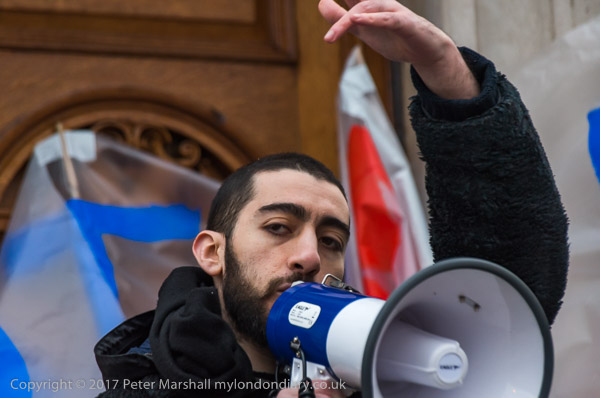
Potent Whisper performed his take on Regeneration, ‘Estate of War’, from this Rhyming Guide to Housing. The video of this was recorded in Cressingham Gardens.
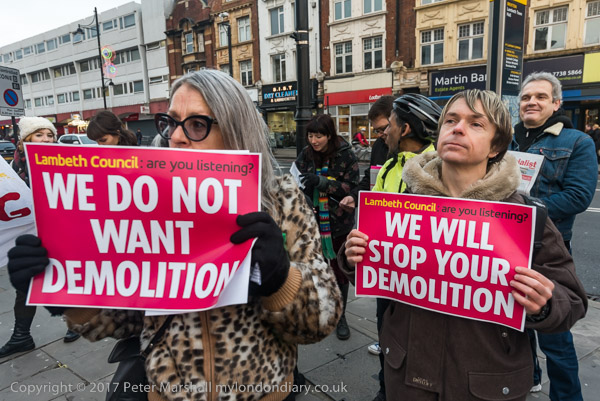
Others who had come along included people from Class War and the e RCG (Revolutionary Communist Group) who have been very active in supporting social housing campaigns as well as Roger Lewis of DPAC who told us how council cuts affect the disabled disproportunately.
More on My London Diary:
Cressingham residents say Ballot Us!
Cressingham Gardens






